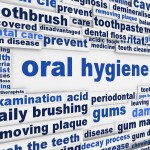
Health literacy skills are needed to access, understand and use information to promote health. According to the Health literacy website functional health literacy in England is low and, ‘Health information in current circulation is written at too complex a level for 43% of working age adults (16-65 years); this figure rises to 61% if the health information includes numeracy’.
The aim of this review was to scope what tools are currently available to measure oral health literacy
Methods
Searches were conducted in the CINAHL, ProQuest, Informit, Pub Med/Medline and Google Scholar databases. The search time frame was 2007-2014 and only English language articles focusing on oral or dental health literacy measurement tools or instruments were considered. Study selection was agreed by the research team.
Results
- 32 articles were included. (14 instruments were identified)
- The most frequently used are those based on the Rapid Estimate of Adult Literacy in Medicine (REALM). – A number of adaptations for oral health are available and the tolls essentially word recognition tests of dental terms. The tools have reportedly shown to be valid and reliable in measuring word recognition.
- The other popular tool was the Test of Functional Health Literacy in Dentistry (ToFHLiD) based on the Test of Functional Health Literacy in Adults (ToFHLA) consists of a 68-item reading comprehension section and a 12-item numeracy section. Initial validation of ToFHLiD showed a low internal reliability but a strong convergent validity since the ToFHLiD scores were highly correlated to the REALD-99 scores.
- These tools have been widely criticised for providing only an approximate measure of OHL based mainly on word recognition. A number of newer tools have included new measures of oral health literacy including numeracy and oral health conceptual knowledge however tools that measure important indicators of oral health literacy such as service navigation are rare these include:-
- Comprehensive Measure of Oral Health Knowledge (CMOHK)
- Hong Kong Oral Health Literacy Assessment Task for Paediatric Dentistry (HKOHLAT-P)
- Health Literacy in Dentistry scale (HeLD)
- Oral Health Literacy Adults Questionnaire (OHL-AQ)
Conclusions
The authors concluded
Findings from this scoping exercise confirm our findings from preliminary scans that the majority of tools are heavily biased towards word recognition, numeracy and reading skills, rather than what this means in terms of health behaviours and service utilisation. More recent developments have attempted to incorporate other aspects considered important, including decision making and service navigation. The incorporation of these aspects into newer tools will provide oral health researchers and policy makers with further evidence of the importance of oral health literacy when designing interventions to improve oral health
Commentary
This scoping review has identified 14 different oral health literacy instrument . Another review of this topic which I have not been able to access is also available ( Parthasay et al). They included 29 studies involving 13 instruments and rated the evidence quality using STROBE guidelines. They concluded: –
As an emerging field, the number and reliability of oral health literacy instruments is rapidly growing, although many are in preliminary stages of testing. The majority of these focus on functional literacy and were developed in English for North American contexts. Further work is indicated to measure oral health literacy as a wider construct across diverse populations.
Links
Dickson-Swift V, Kenny A, Farmer J, Gussy M, Larkins S. Measuring oral health literacy: a scoping review of existing tools. BMC Oral Health 2014 Dec 4;14(1):148. [Epub ahead of print] PubMed PMID: 25472659. [PubMed abstract]
Parthasarathy DS, McGrath CP, Bridges SM, Wong HM, Yiu CK, Au TK. Efficacy of instruments measuring oral health literacy: a systematic review. Oral Health Prev Dent. 2014;12(3):201-7. doi: 10.3290/j.ohpd.a32681. PubMed PMID: 25197741.

Morning! @PiFonline Something for PiF News this week? > “Oral health literacy tools” by @TheDentalElf http://t.co/6VBlwfVShH
@Minervation @TheDentalElf Indeed – will definitely include and thanks :)
Don’t miss: New review on Oral Health Literacy http://t.co/0ZZ5TV1BlG
Oral health literacy: current tools biased towards word recognition, numeracy and reading skills @TheDentalElf http://t.co/n4crafcSyW
[…] Oral health literacy: current tools biased towards word recognition, numeracy and reading skills […]